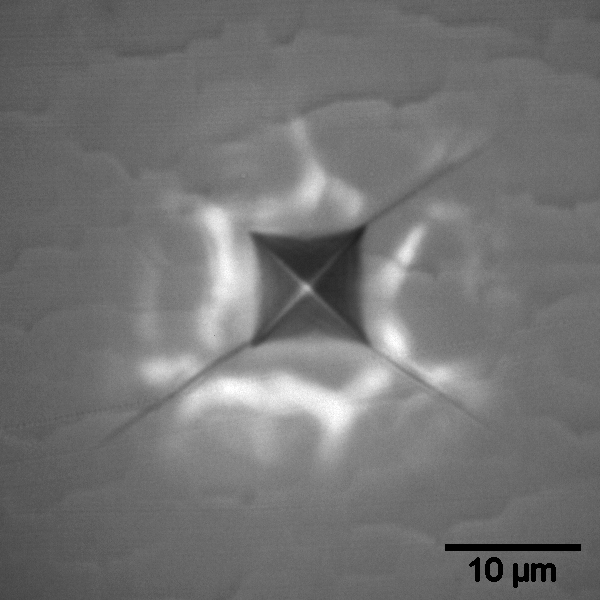Dislocation activity and crack formation in compound semiconductors
Introduction
Compound semiconductors have a great importance for technological applications due to their electrical and optical properties. The direct band gap of various compound semiconductors allows the fabrication of optical devices (e.g. light-emitting and laser diodes). Some of these materials, especially Gallium Arsenide (GaAs), allow the operation in high-frequency devices due to the high mobility of their carriers. The fabrication of single crystalline compound semiconductors make great demands on the crystal growing. The mechanical processing of single crystals (e.g. sawing or polishing) is carried out almost exclusively in the brittle regime by the formation and cross-linking of micro cracks. The efficient processing of cystals demand a profound knowledge of the crack formation and crack proparation.
Aims
The elastic and plastic properties of GaAs are quite well-known, but there exist only a few experimental investigations of the formation and proparation of cracks. In comparison to GaAs, the mechanical properties of Gallium Nitride (GaN) are less investigated. In this project, dislocations and cracks are generated by indentations into the suface of the sample. The indentations are investigated with multitude microscopic techniques in plan view and cross section. In this project, the influence of crystal defects, especially of dislocations, is to be determined.
Techiques
Examples
Investigation of a Vickers indentation in GaN with multitude techniques of microscopy
 |
 |
 |
| Topografic contrast using secondary electrons by SEM |
LM image of the surface and lateral cracks beneath the surface |
Investigation of dislocations by CL imaging |
Imaging of Vickers indentations in GaAs
 |
 |
| Imaging of single dislocations by TEM |
Investigation of the surface morphology by AFM |
Publications
 |
Ingmar Ratschinski, Frank Heyroth, Wolfgang Fränzel, Hartmut S. Leipner
Anisotropy of crack and dislocation formation in GaAs
Phys. Status Solidi C 6, No. 8, (2009) 1836– 1840 |
Cooperation partners
Contact:
Ingmar Ratschinski






